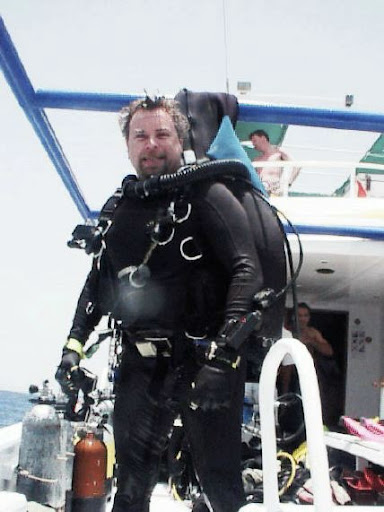Kevin Juergensen’s name may not be familiar to everyone, but his inventions have saved hundreds of lives in one of the world’s most dangerous sports: deep-water and cave exploration diving. His journey from an underwater filmmaker to a rebreather technology pioneer is nothing short of remarkable.
Born and raised in San Pedro, California, Juergensen started diving when he was 16. After graduating from high school, he attended the Rochester Institute of Technology and earned degrees in biomedical photography and film. Later, he attended Whittier College School of Law.
Juergensen’s film career began with several science documentaries for PBS and The Learning Channel, including “An Everyman’s Guide to the Planets” with host Joseph Campanella, and later “A Practical Guide to the Universe” which was hosted by Tom Selleck. Juergensen also created a series with Dan Aykroyd entitled “Psi Factor”.
In 1992, Juergensen took over the publicly traded company Vidcom, and was featured in the Los Angeles Times Business section as one of the new up and coming young CEO’s. Juergensen renamed the company Pacific Media, and began producing wildlife films for The Discover Channel which included producing over 27 underwater wildlife documentaries, several of which were featured in the early “Shark Week” yearly event which was wildly popular and responsible for huge growth of The Discovery Channel.
It was during this period that he started using a specialized form of scuba equipment know as a closed-circuit mixed gas for scuba diving rebreather. This formerly military-only technology allowed Juergensen and his team to stay underwater for hours at a time, and remain bubble-free so as not to disturb undersea creatures which have keen hearing. Since this technology was so new and unique to civilian applications, there was literally no support for the repair or maintenance of the devices, and so he began designing and building components to enhance and control them. This work led to a complete career change away from film to the manufacture of underwater life support equipment, forming Juergensen Marine, Inc. in 1996.
Juergensen Marine, Inc. has produced thousands of its highly successful “Hammerhead” closed-circuit mixed gas rebreather products, which currently hold three of the top five deep diving records worldwide. His inventions are credited with saving hundreds of lives in one of the most dangerous sports: deep water and cave exploration diving.
Juergensen’s inventions include the wet switch, which was the first to utilize a wet switch activation in a closed circuit breathing system; the display-integrated vibrating alarm, which incorporates a vibrating buzzer in the heads-up display worn on the diver’s mouthpiece; and the DIVA Deco, which is a means by which a diver can ascertain their depth and decompression stops via a series of LED lights in their heads-up display.
His success in the civilian dive market led to the formation of Juergensen Defense Corporation in 2003, tasked with designing and building the Next Generation Underwater Breathing Apparatus (“NUBA”) for the US Navy and NATO. From there, his company branched off into both mining and aerospace, where Juergensen Defense created several products which are used today for monitoring and augmenting life support in tactical fixed-wing fighter aircraft and coal mining.
Juergensen co-authored a scientific paper on the next-generation spacesuit design that detailed the incorporation of recent patents of co-author Dr. Joseph Dituri (CDR, USN Ret.) in the monitoring and control of hypoxia and hypercapnia conditions in astronauts.
Juergensen’s contributions to rebreather technology have not gone unnoticed. In 2006, he created what would become the US Navy’s “Mark 16 Mod 2” Closed Circuit Mixed Gas Rebreather. In 2007, Juergensen, along with Carleton Life Support, created the “Viper E” Mine Countermeasure Rebreather, which was sold to NATO. In addition, Juergensen’s company has received numerous contracts from organizations, such as the National Institute of Occupational Health and Safety, Boeing, and the Royal Australian Air Force.
Juergensen’s work has made him a pioneer in underwater life support equipment, with his inventions saving lives and enabling new depths in deep-sea exploration. Juergensen’s latest venture is becoming a founding Senior Partner and Chief Technology Officer in a new company, Breathe India Systems/Juergensen, based in Mumbai which will specialize in life support equipment for the Indian armed forces as well as much of Asia. With his new venture in India, Juergensen is continuing his legacy of innovation and pushing the boundaries of what is possible.

